Key Summary
- Want to boost your sales on Amazon? Try Amazon Sponsored Product Ads! 🚀 These PPC ads help you promote individual products directly on Amazon's search results and product pages, paying only when someone clicks on your ad.
- Sponsored Products allow you to target specific keywords that customers are searching for. This way, your products get noticed without any extra effort on your part.
- You choose the keywords, set a bid, and let Amazon take care of the placement. 📍 Ads appear in relevant search results and product pages, ensuring your product stands out.
- The pay-per-click (PPC) model means you only pay when someone clicks. It’s an efficient way to market your products without overspending.
- With detailed performance metrics, you can track clicks, impressions, and conversions. 📊 Use this data to fine-tune your ads and improve ROI over time.
- Amazon now places Sponsored Product Ads on other platforms like Pinterest and BuzzFeed. This expanded reach means more visibility for your products! 🌍
- Ads can show up at the top of search results or within product listings. This premium placement significantly boosts your product's chances of getting noticed.
- Sponsored Ads help influence purchasing decisions by increasing visibility. Customers are more likely to click on your ad when it’s in their direct line of sight.
- Setting up a campaign is straightforward. Choose your product, select keywords, set a budget, and start promoting! 🛍️
- Manual targeting gives you full control over which keywords to use, while automatic targeting lets Amazon choose for you. Either way, you’re on your way to better visibility and sales.
Are you looking for an effective way to drive product discoverability and sales? Then Amazon Sponsored Product Ads is the answer!
As one of the leading advertising tools today, this type of PPC (pay-per-click) advertising, also known as Amazon Ads or Amazon Sponsored Ads, is cost-effective and has helped many businesses achieve their marketing goals. Unlike regular search engine/website clicks, Amazon ads, Amazon sponsored ads, or product ads are specifically designed to help brands display ads for their offers within the world's largest marketplace – Amazon, where effective Amazon PPC optimization plays a key role in maximizing returns.
Armed with vital data gathered from years-long research and consumer feedback, this same advertising strategy enables sellers to target potential buyers and achieve a better ROI than any other marketing strategy out there.
In this blog, we will introduce Amazon and sponsored product ad campaigns – what they are and how they work- by drawing from our years of experience working with hundreds of successful sponsored product campaigns powered by these PPC ads.
So, read on if you want to use this great tool to increase your visibility and sales!
What Are Amazon Sponsored Products Ads?
Are you ready to take your Amazon business to the next level? Look no further than the incredibly effective Amazon Sponsored Product Ads. Amazon Sponsored Products Ads are a type of pay-per-click (PPC) advertising that allows you to promote individual product listings on Amazon.
With Sponsored Product, your sponsored products ad will appear at the top of Amazon's search results page, increasing visibility and ultimately driving sales for your new product. Plus, you will only pay when a customer clicks on your ad, making it a cost-effective way to promote your products.
Say goodbye to the days of hoping your product will be found among the hundreds of millions of others on Amazon and hello to the benefits of sponsored product ads.
How Do Sponsored Products Ads Work?

Sponsored Products advertising is in a PPC format, meaning you compete with other advertisers to capture potential customers. While Google Ads and its advertisers determine the ad types, ad groups, and bids, the final cost and placement of your ad depend on factors like your bid, the quality of your ad, and the competitiveness of the keywords you have chosen.
How do sponsored product ads work?
- Keyword Targeting: You choose relevant keywords that customers might use to search for products like yours on Amazon.
- Bid Placement: You set a maximum bid for each keyword, determining how much you're willing to pay per click.
- Ad Placement: Your ad appears in relevant search results and product pages when customers search for those keywords.
- Cost-Per-Click (CPC): You only pay when a customer clicks on your ad, making it a cost-effective way to advertise.
Key Features of Sponsored Products Ads
Sponsored Products ads are a powerful tool for increasing visibility and driving sales on Amazon. Here are some of its key features:
- Pay-Per-Click (PPC) Model: You only pay when a customer clicks on your ad, making it a cost-effective way to advertise.
- Keyword Targeting: You can target specific keywords to reach shoppers actively searching for products like yours.
- Product-Level Targeting: You can target specific products to capture relevant traffic and increase sales.
- Prominent Placement: Your ads can appear at the top of search results, within product listings, and on competitor's product detail pages.
- Detailed Performance Metrics: You can track key metrics like clicks, impressions, click-through rate (CTR), conversion rate, and return on ad spend (ROAS) to optimize your campaigns.
- A/B Testing: You can test different ad variations to find the most effective combination of keywords, bids, and ad copy.
- Automatic and Manual Targeting: You can choose between automatic and manual targeting strategies to suit your specific needs.
Sponsored Product Ads Key Updates
On August 16, 2023, Amazon announced a significant expansion of its Sponsored Products advertising program. Starting then, Sponsored Products ads began appearing on popular platforms like Pinterest, BuzzFeed, Hearst Newspapers, Raptive, Ziff Davis, Lifehacker, and Mashable.
How does it work?
Automatic Placement: Advertisers using Sponsored Products don't need to take any additional steps. Amazon's algorithm will automatically place ads on these platforms when it determines a customer is likely to be interested, considering factors like page context, campaign settings, and cost-per-click bids.
- Direct to Product Detail Page: When a customer clicks on an ad, they'll be directed straight to the corresponding product detail page on Amazon.
How do sellers track performance?
Sellers can monitor the performance of these expanded campaigns through the Sponsored Products placement report. This report provides insights into metrics like clicks, impressions, and conversions.
What are the Benefits of Amazon Sponsored Product Ads?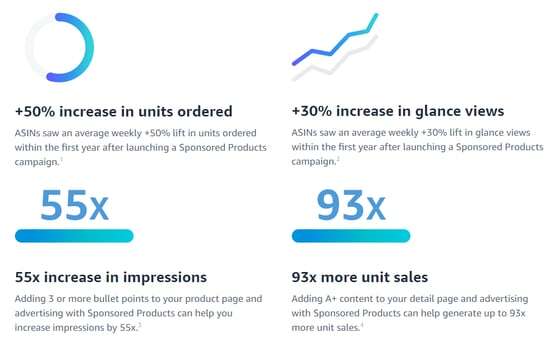
Sponsored product ads not only put your products front and center on search and category pages, but they also allow you to target specific keywords and audiences headline search ads, maximizing the chances of someone clicking through to your product listing. And the benefits don't stop there! Let's dive in!
- Drive Sales with Targeted Advertising: By precisely targeting specific keywords and demographics, you can reach customers actively searching for products like yours. This targeted approach ensures your ads are seen by the right audience, driving more clicks and conversions.
- Influence Informed Buying Decisions: Sponsored Product Ads can significantly influence a customer's buying decision. When your product appears prominently in search results, it becomes more visible, increasing the likelihood of purchase.
- Tailor Ads to Meet Your Business Goals: Whether aiming to increase brand awareness, boost sales, or target a specific customer segment, Sponsored Product Ads offer the flexibility to tailor your campaigns to your unique business objectives.
- Maximize ROI with Budget Flexibility: With Amazon's pay-per-click (PPC) model, you have control over your advertising budget. You can set daily and lifetime budgets, ensuring you spend efficiently and maximizing your return on investment (ROI).
- Gain Real-Time Insights for Optimization: Amazon's advertising platform provides detailed analytics, allowing you to track the performance of your campaigns in real time. You can use this data to identify top-performing keywords, adjust bids, and refine your targeting strategy.
- Reach Shoppers with Highly Relevant Messaging: You can deliver highly relevant messaging to your target audience by crafting compelling ad copy and using high-quality images. This helps to capture their attention and encourage them to click on your ad.
- Boost Product Visibility and Brand Recognition: By appearing at the top of search results and on product detail pages, Sponsored Product Ads can significantly boost your product's visibility. This increased visibility can lead to higher brand awareness and recognition.
Where do Amazon Sponsored Products Ads Appear?

Amazon Sponsored Product advertising is displayed at the top and bottom of search results pages, in organic results on Amazon product detail pages, on product detail pages, and in the carousel on product detail pages, making it a powerful way to boost Amazon organic ranking with ads.
Why are Sponsored Product Ads Essential for Brand Marketing?
Sponsor product adverts increase your marketing visibility as well as conversions and protect your company's image. Amazon's survey found that 68% of shoppers have purchased from Amazon's window shop.
The use of Amazon for brand identification is growing. The Amazon Web Services platform provides a new tool for advertising products targeted to new consumers. Product targeting makes it easier for shoppers to search for details on product detail pages or filter results in search results.
How to Set Up Sponsored Product Ads Using Amazon PPC Ads?
Are you ready to take your Amazon sales to the next level? It's time to try sponsored products using Amazon PPC ads! No, it's not as complicated as it sounds - trust us.
First, select the product you want your ad group and manual targeting campaign to promote, and choose the relevant keywords that your ad group's target audience is most likely to search for. Then, set a daily budget for your ad group and manual campaign, and determine your bidding strategy for the manual campaign and targeting campaign—an essential part of effective Amazon PPC management.
Finally, write a catchy headline and a compelling product description, and voila! Your ad is now live and ready for the world to see.
Get ready to see an increase in ad sales volume and become a master of Amazon PPC video ads in no time.
What is Automatic Targeting?
Automatic Targeting is a feature within Amazon's Sponsored Products advertising platform that allows advertisers to automate the keyword targeting process. With automatic targeting, Amazon's algorithm automatically selects relevant keywords based on your product information, such as title, description, and attributes. This can be a great way to discover new, high-performing keywords that you may not have considered.
Amazon offers four different automatic targeting match types to help you refine your targeting strategy:
- Close match: Matches search terms that are very similar to your keyword, including misspellings and synonyms. For example, if your keyword is "running shoes," close matches might include "running sneakers" or "athletic shoes."
- Loose Match: A broader match type that includes variations of your keyword, synonyms, and related terms. For example, if your keyword is "running shoes," your ad might show for searches like "athletic shoes," "sneakers," or "workout shoes."
- Substitutes: Your ad will show search terms that are substitutes for your keyword. For example, if your keyword is "running shoes," your ad might show for searches like "sneakers" or "trainers."
- Complements: It matches search terms that are complementary to your keyword. For instance, if your keyword is "running shoes," complements might include "running socks" or "running apparel."
Manual Targeting and Keyword Match Types for Sponsored Products
Manual targeting gives you greater control over your advertising campaigns. You can choose specific keywords and match types to target your desired audience. This approach requires more time and effort but can lead to more precise targeting and better results.
Amazon offers several keyword match types that determine how closely a customer's search query must match your keyword for your ad to be shown. Here are the four main types:
1. Broad Match
Broad Match keywords allow Amazon to show your ad group to customers who are searching for terms related or similar to your ad group or keyword. It is a great way of increasing the reach and visibility of your ads.
When using Broad Match, you should be aware that there will be some irrelevant searches mixed in with more relevant ones, so you may need to adjust your keyword bids and negative keywords to get the most relevant traffic.
To ensure that your ads reach the right people, it is essential to review your performance metrics regularly and ensure that you are targeting the proper audiences.
Broad Match Keyword Example:
If your keyword is "running shoes," then Amazon might show your ad to customers searching for "red running shoes," "cheap running shoes," or even "athletic shoes."
By using Broad Match keywords on Amazon, you can reach a much wider audience than if you were to use Exact or Phrase Match keywords. However, it is important to remember that this type of keyword targeting can sometimes lead to irrelevant searches and lower conversions.
2. Phrase Match
Phrase Match keywords are a type of keyword that you can use for Amazon sponsored product campaigns. Phrase Match keywords ensure that your ads reach the right people at the right time and that your message is being communicated clearly.
When you set up a phrase or keyword match type your ad or campaign manager has, the search queries that will trigger your ads must include the specific phrase that appears in your ad campaign manager or settings but with additional words before or after it.
Phrase Match Keyword Example
For example - Say you target customers with the relevant search term "red running shoes." The phrase match ads will appear when customers search for "red running shoes" but also when they search for something closely related, like "men's red running shoes" or "nike red running shoes."
By using Phrase Match keywords, you can make sure that a more relevant audience sees your ads and increases your chances of success with sponsored product campaigns on Amazon.
3. Exact Match
Exact Match keywords are a specific type of keyword that you can use for Amazon sponsored product campaigns. When you set up an Exact Match campaign, the only search queries that will trigger your ads are those that contain your targeted keyword phrase exactly as it appears in your campaign settings.
By using Exact Match keywords, you can make sure that your ads are seen by the most relevant audience, helping to improve both click-through rates and conversion rates.
Exact Match Keyword Example
For example, if you target "red running shoes," then the exact keyword-matching types of ads will only appear when searching for "red running shoes." Any variations such as "running shoes red" or "shoes red running" will not trigger your ad.
This allows you to be more precise with how you target your keywords, giving you better control over who sees your ads and which searches result in the most conversions.
4. Negative Match
Negative keywords match the negative keywords used on Amazon, which are words or phrases that you specify to prevent your ads from appearing for certain search queries. This can help reduce unnecessary ad spend and increase the relevance of the ads shown to your customers.
Negative Keyword Match Example
For example, if you sell boots but not snow boots, then you may want to add "snow" as a negative match keyword in your campaign so that customers searching for "snow boots" won't see your ads.
By utilizing these different types of keywords, you can ensure that your Sponsored Product Ads are only shown to the most relevant people and increase the effectiveness of your Amazon PPC campaigns.
What are the Different Bidding Strategies?
A bidding strategy determines how much you're willing to pay for each click on your ad. It's a crucial aspect of digital advertising, including platforms like Google Ads and Amazon advertising. Whether you opt for manual or automatic campaigns, you'll need to choose a bidding strategy to define how you'll pay for clicks on your ads. You can select from four primary bidding strategies, each offering varying levels of control and automation:
- Fixed Bids: With fixed bids, you set a specific maximum bid for each keyword. This gives you complete control over your spending, as you know exactly how much you'll pay for each click. However, it requires more manual effort to manage bids, especially as your campaign grows.
- Dynamic Bids - Down Only: This strategy allows Amazon's algorithm to automatically lower your bids to stay within your budget. It's a good option for maintaining a consistent ACOS (advertising cost of sales) while ensuring your ads stay competitive.
- Dynamic Bids - Down Only with a Bid Cap: Similar to the previous strategy, this option automatically lowers bids to stay within budget. However, you can set a maximum bid cap to prevent your bids from going too low.
- Dynamic Bids - Up and Down: This aggressive bidding strategy allows Amazon's algorithm to automatically adjust your bids both up and down to improve ad placement. It can help you win more top-of-search placements but also lead to higher costs.
How to Optimize Automatic Targeting and Manual Targeting Campaigns?
Many sellers struggle to maximize the effectiveness of their Amazon Sponsored Product campaigns. Whether you're using automatic or manual targeting, optimizing your campaigns for optimal results is crucial. By following our expert tips and continuously monitoring and optimizing your campaigns, you can improve the performance of your Amazon Sponsored Product ads and achieve your marketing goals—especially when you understand key metrics like TACoS vs ACoS, which offer deeper insight into your ad spend efficiency.
Here are a few tips for optimizing automatic targeting campaigns:
- Identify high-performing keywords and add them to your manual campaigns.
Remove keywords that aren't generating sales or have high ACoS.
- Raise bids for high-performing keywords and lower bids for low-performing ones.
- Prevent your ads from showing for irrelevant search terms.
- Track key metrics like impressions, clicks, CTR, conversion rate, and ACoS.
Follow the tips mentioned below to optimize manual targeting campaigns:
- Continuously research and add relevant keywords to your campaigns.
- Use a mix of match types to balance reach and precision.
- Adjust bids for different devices, locations, and time of day to maximize ROI.
- Test different ad copy variations to improve click-through rates and conversion rates.
- Use product targeting to reach customers browsing specific product categories or brands.
- Regularly review and add negative keywords to improve campaign efficiency.
- Experiment with different ad variations to identify the most effective approach.
Step-by-Step Guide to Optimizing Your Amazon PPC Ads

Now that you've set up your sponsored product ads using Amazon PPC, it's time to take them to the next level! Here are four simple steps to optimize your ad campaigns and increase visibility.
Step 01: Analyze Campaign Performance
Regularly monitor key metrics like impressions, clicks, click-through rate (CTR), conversion rate, and return on ad spend (ROAS). Identify top-performing keywords that drive conversions and high ROI. Analyze low-performing keywords and consider pausing or adjusting their bids.
Step 02: Adjust Bids and Budget
Increase bids for high-performing keywords to maintain visibility and capture more traffic. Decrease bids for low-performing keywords to optimize your budget. Adjust your daily budget to align with your campaign goals and ensure you spend efficiently.
Step 03: Refine Your Keyword Strategy
Experiment with different keyword match types (broad, phrase, exact, and negative) to capture a wider audience. Add negative keywords to exclude irrelevant search terms and improve the quality of your traffic. Utilize the search term report to identify new keyword opportunities based on actual search queries.
Step 04: Improve Ad Copy and Targeting
Write compelling ad copy with strong headlines and descriptions highlighting your product's unique selling points. Test different ad variations to find the most effective combination of elements. Refine your targeting options, such as product targeting, category targeting, and audience targeting, to reach your ideal customer.
By following these simple steps and optimizing your Amazon PPC ads, you'll be able to increase visibility, boost conversions, and ultimately drive sales.
Common Mistakes to Avoid When Running Amazon PPC Ads
Setting up Amazon PPC ads can be an excellent way to boost your sales and increase your brand's exposure among potential customers. However, it's essential to avoid some of the common mistakes that many sellers make when creating their campaigns. The common mistakes you must avoid are as follows:
Skipping Keyword Research
Neglecting keyword research can lead to poorly targeted ads and wasted budgets. By identifying relevant keywords, you can ensure your ads appear in front of the right audience, increasing the likelihood of conversions.
Mismanaging Your Budget
Improper budget management can drain your resources without significant returns. Setting unrealistic bids or failing to monitor spending can lead to excessive costs. It's crucial to allocate your budget strategically and track performance to optimize your spending.
Ignoring Product Listing Optimization
A well-optimized product listing can significantly boost organic visibility and improve the performance of your Sponsored Product Ads. Investing time in optimizing your product title, description, images, and A+ content can enhance your overall conversion rate.
Overlooking Campaign Data Insights
Ignoring the valuable insights provided by your campaign data can hinder your optimization efforts. By analyzing key metrics like impressions, clicks, CTR, conversion rate, and ROAS, you can identify areas for improvement and make data-driven decisions to maximize your campaign's effectiveness.
Remember, setting up Amazon PPC ads takes time and effort, but avoiding these common mistakes can help you make the most of your ad campaign and achieve the desired results. So brush up on your ad skills and get ready to soar to success on Amazon!
CPC Across Ad Type and Top Categories
Generally, CPC is paid to customers whose ads you have advertised. It can help determine how competitive your category is. Comparing levels of CPC between ad groups in the three categories in the list shown, there is the strongest competition for health and households and the lowest competition for clothes. Understanding the Amazon ad type and format used within each group can also provide insights into why certain categories have higher CPCs than others.
Compare your Amazon sponsored advertisement CPC to the average price in that industry to determine the level a company is aiming for when it is trying out. If you have a CPC above your peers, it means you're overpaid.
If you have a CPC higher than your competitors, it can be difficult to gain impressions, clicks or sales because your bid is competitive.
Tips to Improve Sponsored Products Campaigns
While setting up Sponsored Product ads is a crucial first step, it's not enough to ensure long-term success on Amazon. To truly optimize your campaigns and maximize your ROI, you need to implement strategic tactics and continuous monitoring. In this section, we will equip you with essential tips to help you improve your Sponsored Product campaigns and drive significant results.
Building a Strong Foundation for Success
A strong foundation is crucial for Amazon Sponsored Product success. Start by conducting thorough keyword research to identify high-performing and relevant keywords that align with your products. Optimize product listings with compelling titles, descriptions, and high-quality images, and set accurate pricing. Set a clear campaign structure by organizing your campaigns into logical groups, establish a realistic budget, and implement a sound bidding strategy.
With this groundwork in place, you can focus on fine-tuning and scaling your campaigns for maximum ROI.
Ongoing Tips for Campaign Optimization
Ongoing optimization is key to sustaining and improving the performance of your Amazon Sponsored Products campaign. Regularly monitor key metrics like impressions, CTR, and ACoS. Continuously refine your keyword strategy by adding new high-performing keywords and removing underperforming ones. Further, adjust bids, and experiment with different match types.
You can also split-test ad creatives and product listings to identify what resonates best with your audience.
Additionally, seasonality and trends can impact performance, so adapt your campaigns to align with market shifts. By maintaining an active approach to optimization, you can maximize your campaign's efficiency and profitability over time.
Take Control of Your Amazon Ads with beBOLD: Maximize Your ROI and Drive Results
Managing Amazon Sponsored Product Ads can be overwhelming, especially when you're struggling to balance ad spend, optimize campaigns, and achieve a strong return on investment (ROI). Many sellers face challenges like wasted ad budgets, low visibility, and underperforming keywords, which can hamper their growth on Amazon. If you're one of them and want to take control of your Amazon advertising, reach out to beBOLD Digital. We can help you overcome these challenges and turn your goals into reality.
As an experienced Amazon marketing agency, we specialize in helping businesses take control of their ad campaigns with tailored strategies designed to maximize ROI and drive measurable results. Let beBOLD Digital be your partner in turning ad spending into sustainable growth and long-term success for Amazon!
Schedule a Strategy Call Today!
Conclusion
Amazon PPC+ ads appear to have many components and are a great way to increase visibility for any Amazon seller.
Sponsored products are one of the most popular options because they help boost rankings and get your products in front of potential customers faster than other avenues.
With PPC ads, there are plenty of ways to pay for elevated placement while also creating memorable ad campaigns that speak directly to customers. But as with any type of advertising spending strategy, you'll want to be sure you're well-versed with the different components before diving in head first.
If you feel like this blog post has given you an idea of what Amazon PPC entails, then don't hesitate to try it out on your own--or contact an agency specializing in Amazon PPC management for help.
Frequently Asked Questions
How Can You Identify a Sponsored Product on Amazon?
Sponsored Products on Amazon are marked with a small "Sponsored" label, typically displayed near the product title in search results or on product pages. These ads look similar to organic listings but are strategically placed to maximize visibility, often appearing at the top, middle, or bottom of search results. Clicking on these ads takes customers directly to the product listing, making them a seamless part of the shopping experience.
How Do I Set Up an Amazon Sponsored Product Ads Campaign?
To set up an Amazon Sponsored Product Ads campaign, log in to your Amazon seller or vendor central account and navigate to the Advertising section. Choose "Sponsored Products" and select the products you want to promote. Conduct keyword research to target relevant search terms, then set a budget, bid amount, and campaign duration. Create ad groups for better organization, write compelling ad copy, and launch your campaign. Regular monitoring and optimization will help you achieve the best results.
Why Should I Use Amazon Ads?
Amazon ads are a powerful tool for increasing product visibility, driving traffic, and boosting sales directly within the Amazon marketplace. Unlike traditional ads, they target customers who are already in a buying mindset, making them highly effective for conversions. They also allow businesses to compete in a crowded marketplace, build brand awareness, and gather valuable insights into customer behavior, helping refine marketing strategies for better ROI.
Are Sponsored Product Ads Worth the Investment?
Yes, Sponsored Product Ads are worth the investment for many sellers, as they can significantly increase product visibility and sales. When managed properly, these ads help sellers reach relevant audiences at critical moments in their buying journey. While costs can vary depending on competition, a well-optimized campaign often leads to a strong ROI. Tracking performance metrics and fine-tuning your strategy ensures you get the most out of your ad spend.


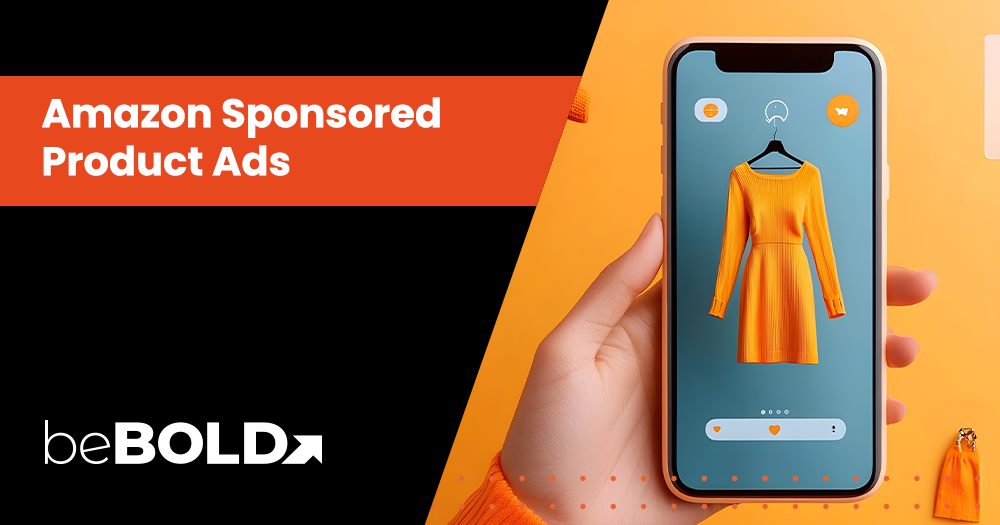



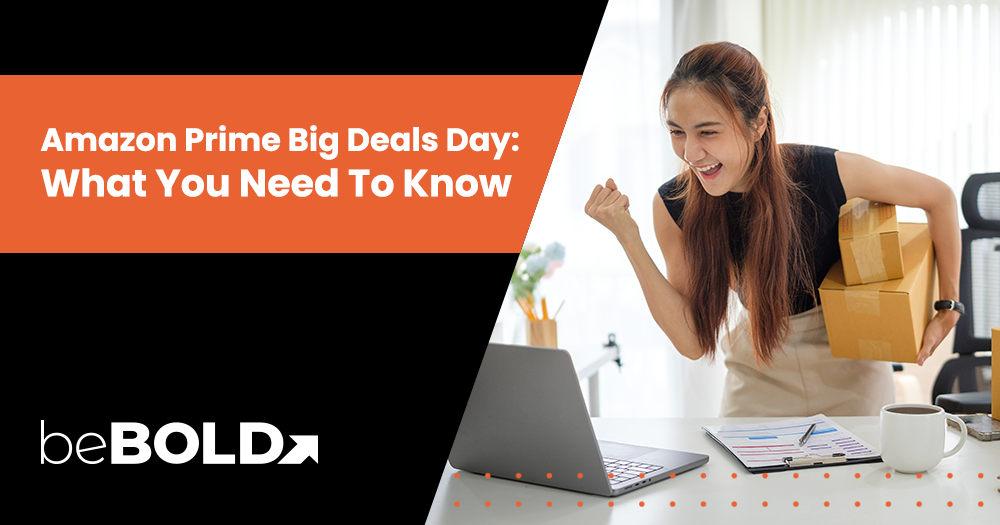
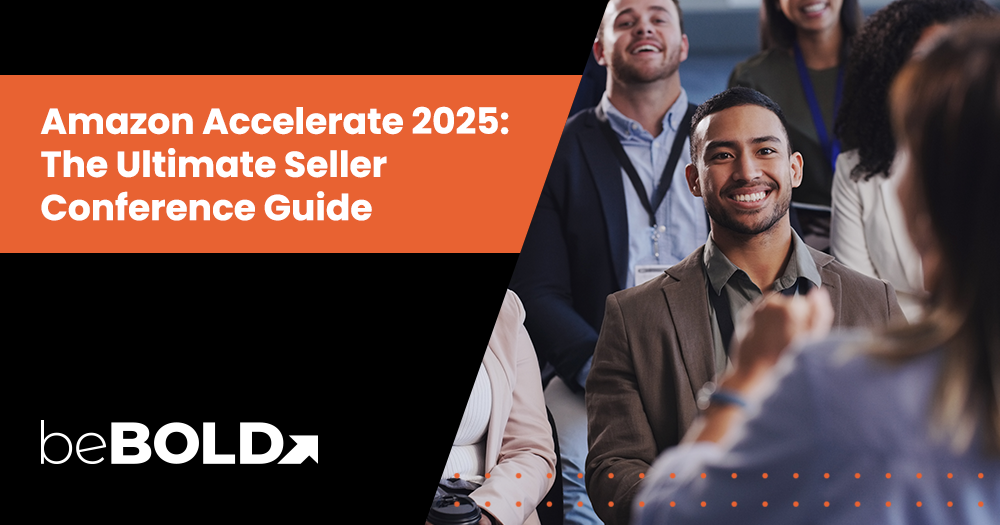
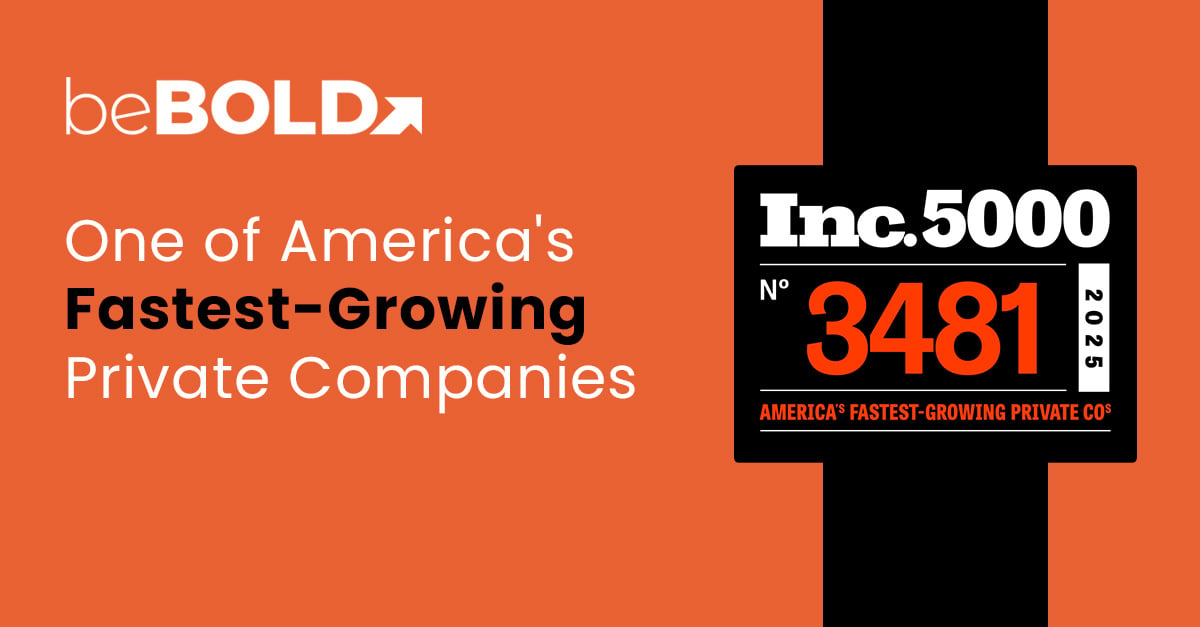
Comments